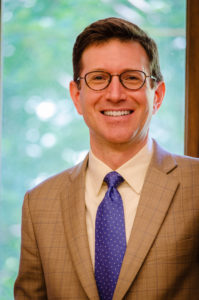How is it that people of wildly varying politics come together in viewing homophobic bullying in schools as an urgent problem? With whom does tackling homophobic bullying through a law-and-order paradigm make us allies? What forms of systemic homophobia, at home and in schools, does a focus on individual bullies obscure? What assumptions about queer adolescents’ sexuality and agency underwrite campaigns against homophobic bullying? Why is it so much easier to crack down on bullies in school than it is to talk openly about sex?
The strength of Daniel Monk’s article is that he shows convincingly that people committed to fighting homophobia can and should ask these questions. His interest is the “conditions of possibility” that have constructed homophobic bullying, discursively, as “a legitimate object of social concern within civil society.” Monk identifies the key discourses that have converged so as to legitimate concern about homophobic bullying. He also explores the political investments that underlie them and the responses to bullying grounded in penal or criminal law.
One discourse is that of child abuse. Monk highlights the particularity of the social focus on homophobic bullying in schools. Gay rights and children’s rights organizations do not, he notes, address the effects of parental homophobia on children. Moreover, the construction of the school as a dangerous place, and by implication the home as safer, corresponds with political and socioeconomic privatizing shifts in the perception of schooling.
Another discourse is that of the child victim. The discourse of homophobic bullying draws on images—simultaneously appalling and reassuring—of the child as innocent victim. Monk’s worry is that the imagery of the child as victim silences other concerns. It desexualizes victims of bullying and effaces adolescents’ sexual agency. He reports that Stonewall, the leading gay rights organization in the UK, addresses homophobic bullying on its Web site, but not young people’s needs for information about safer sex.
The third discourse is that of “the tragic gay.” Monk’s analysis here will be counter-intuitive to many readers, but I found it disturbing and provocative. He suggests that the problematization of homophobic bullying has ushered in a shift by which the negative characteristics once associated with homosexuality are now associated with the victims of bullying. “Development into successful normal adulthood is not ‘arrested’ by paternal or maternal attachment, but rather by homophobia itself. In other words, the development question now is not, ‘What makes someone homosexual?’, but instead ‘What makes someone behave in a way that fails to conform to heteronormative behaviour’.” The queer youth remains “a reassuringly distinct and tragic ‘other’ from that of the heterosexual.” Now the developmental cause is not homosexuality, but bullying. The upshot? Queer youth still need help.
Monk is most bracing in his critique of the political aspirations associated with the fight against homophobic bullying. Bullying and its victims are measured as problematic against the metric of an imagined, post-homophobic future. If it weren’t for bullying, goes the thinking, queer adolescents might grow up to be more normal. Gay boys might be less effeminate. They might play more team sports. They might grow up to form more stable, “traditional” monogamous relationships. Here the crucial problem is that the harm chalked up to bullying is measured by an assimilative metric of straight-acting heterosexuality.
The article’s analysis of the turn to law-and-order policies by some opponents of homophobic bullying gave me pause. The clampdown on individual bullies, argues Monk, individualizes the bully through a pathological gaze. Focus on the individual perpetrator erases structural forms of homophobia. Readers may vary in the relevance they accord to Monk’s observation that policies making parents responsible for their children’s bullying bear hardest on economically disadvantaged single mothers.
Certainly some elements of the article will resonate most in the United Kingdom (Monk is based at the School of Law, Birkbeck, University of London). The Conservative government’s strong support for anti-bullying initiatives comes to mind. So does the focus on rigidly gendered school uniforms as a form of structural homophobia. But the general argument will resonate in North America, which has recently witnessed the “It Gets Better” campaign on youtube, as well as in other places.
Monk’s article is not an easy read. It is densely written and its interdisciplinary range is broad. The care with which he registers caveats—in a laudable effort to specify his critique’s limits—occasionally weighs on the text. But it will reward a thorough reading. I should add that it will annoy some people, including people I like and whose efforts I admire. Good critical scholarship often does.
The push for legal recognition of same-sex adult conjugality has rightly inspired a rich critical literature, chiefly from queer and feminist scholars. Daniel Monk’s article joins a small, but growing, body of work that turns a critical eye on legal and social efforts related to children, be they the children of same-sex parents or queer themselves.








